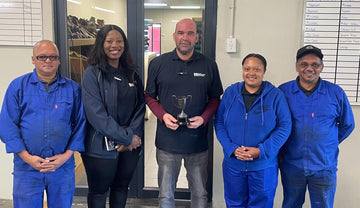
Unravelling the Misinformation
I call it sustainable buzz… and leather is often at the centre of debate in this buzz. Accused of being environmentally unfriendly and morally objectionable, leather has faced criticism from eco-conscious consumers and advocacy groups. But is this vilification justified, or is it merely a result of misinformation and greenwashing tactics?
Recent developments shed light on the complexities surrounding leather's reputation. One prominent tech brand, known for its stringent environmental commitments, surprised many by discontinuing leather phone covers in favour of supposedly eco-friendly alternatives. However, this move raised eyebrows as the other options proved less durable, failing to withstand the rigours of daily use, which have been brought to light in a swath of YouTube videos. Moreover, tanneries supplying leather to this brand have committed to accreditation by the Leather Working Group (LWG), Reach, and Restricted Substance list, showcasing their dedication to responsible leather production.
Despite these advancements, leather remains a target for greenwashing tactics. Some companies, such as the American Non-Profit lobbying groups, promote alternatives to leather-based on exaggerated or misleading environmental claims, diverting attention from more pressing ecological concerns while charging for their accreditation certifications. Plastic-based alternatives, often marketed as eco-friendly vegan leather, carry environmental and health risks. Polyurethane fabrics, commonly used in vegan leather, contribute to pollution and microplastic contamination in marine environments and pose health risks to humans and wildlife.

Calls for transparency and authenticity in environmental claims are growing louder. Initiatives like the European Union's Directive on Green Claims aim to hold companies accountable for their ecological assertions, ensuring consumers receive accurate information. However, combating greenwashing requires collective action from industry stakeholders, regulatory bodies, and consumers.
As advocates for authenticity, we urge companies to confront the complexities of sustainability with honesty and integrity. Rejecting greenwashing tactics and prioritising transparency will foster trust, empower consumers, and drive meaningful change. Despite its controversies, leather has proven its durability and potential for responsible production. It's time to move beyond surface-level solutions and engage in a nuanced conversation about sustainability.
Let's address a crucial point: Currently, no cows are specifically bred for their hides in fields. The misconception about leather being cruel arises from a misunderstanding. The value of cowhide is not substantial enough to justify farming exclusively for this purpose. In our capitalist society, the decision often depends on whether the effort is deemed worthwhile. To put it simply, if it were solely for the cow's hide, the practice of ranching cattle would exist. This is a reality that American Non-Profit groups, regardless of their stance, must acknowledge. Leather is, in fact, a byproduct whose value is realised after the hide is discarded and skilled artisanal tannery techniques are applied.

Without the leather industry, billions of tons of waste would accumulate in landfills, exacerbating the environmental challenges we already face regarding space and the issues associated with mixing organic and non-organic waste. It is preferable to repurpose a byproduct rather than discard it. I urge our governments and corporations to adopt holistic farming practices instead of merely succumbing to the allure of superficial marketing strategies to appease conscientious consumers, who are often left feeling guilty. It's disheartening that in cases where a plastic phone case is sold at the same price as a leather one, the consumer is the one who loses out. This perpetuates the advantage of the one percent, who may then ridicule those who question such practices as being irrational conspiracy theorists.
In conclusion, the vilification of leather as an environmental villain reflects a broader trend of misinformation and greenwashing. By challenging misconceptions and advocating for authenticity, we can unravel the truth behind leather and advance a more nuanced conversation about sustainability. Perhaps, in the end, the leather class is indeed permanent, and it's the responsibility of brands to align with genuine environmental stewardship rather than succumb to marketing pressures.




